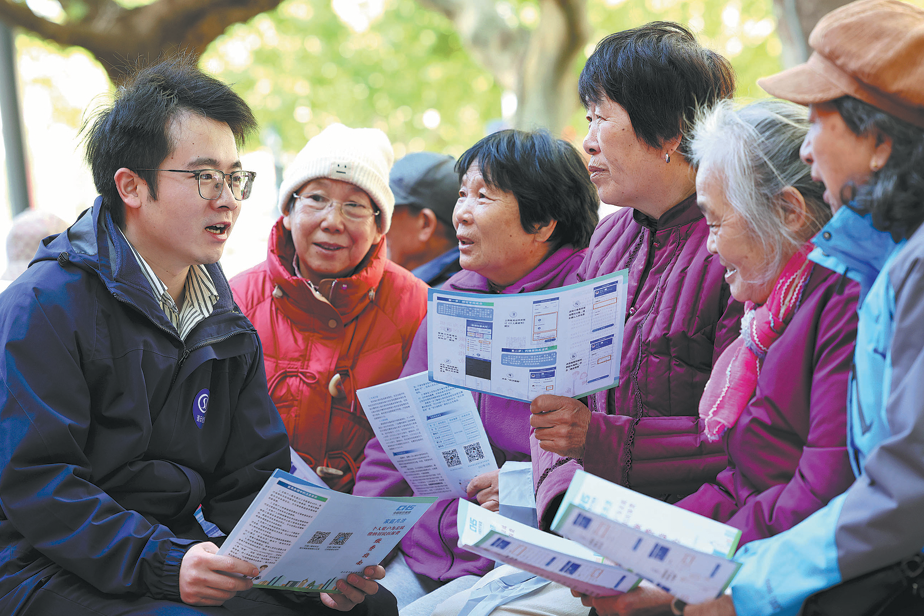SE Asia reaps sweet harvest from open China
By ZHU WENQIAN in Beijing and SHI RUIPENG in Nanning | China Daily | Updated: 2023-06-22 07:41

The Guangxi Pingxiang Integrated Free Trade Zone has recently embraced a busy season of fruit imports from Southeast Asian markets, given the growing areas' advantageous climate, proximity to China and preferential tariff policies. Trucks have been continuously transporting fruits to the port, and Customs clearance of such products can usually be completed within half a day.
"With tropical fruits such as durian, lychee, mangosteen and jackfruit hitting the market, Puzhai Port, a trade zone in Guangxi bordering Vietnam and affiliated with Youyi Port, has seen continuously growing volumes of imported fruits lately," said Wu Yongdong, an official at Puzhai Port.
From January to April, Youyi Port imported 4.66 billion yuan worth of durians, accounting for 64.1 percent of the total value of imported durians nationwide. The volume of ASEAN fruits that China imported through Youyi Port accounts for about half of the country's total of such imports annually, local Customs said.
Particularly, in the first quarter, China imported durians worth 860 million yuan from Vietnam, accounting for 93.5 percent of China's total durian import, local Customs added.
The Regional Comprehensive Economic Partnership agreement, which took effect on Jan 1, 2022, enabled Vietnamese durians to enter the China market.
This year, with steady economic recovery and growth after China optimized its pandemic prevention and control measures, policy dividends of the RCEP agreement have continued to be realized, and have boosted trade between member countries.
The RCEP agreement includes 15 Asia-Pacific countries. It is expected that over the next two decades, the pact will reduce up to 90 percent of tariffs on goods traded among members.
Guangxi TWT Supply Chain Management Co Ltd, a Nanning-based cross-border trading company founded in 2015, has been importing fruits from ASEAN markets on a large scale.
In the past seven years, the volume of durian imports by the company grew by about 15 percent annually, fueled by an increasingly strong appetite for durians in the Chinese market.
Since 2019, China has imported more fresh durians than cherries in quantity, cementing its place as the king of imported fruit in China. The fruit is also labeled as the single product with the highest gross profit margin among imported fruits, said industry observers.
In 2017, China imported 224,400 metric tons of durians. In 2022, the number reached 825,000 tons, and the import value achieved $4.03 billion, said the General Administration of Customs.
Despite COVID-19 having affected supply chains for an extended period since 2020, the pandemic didn't lessen Chinese consumers' appetite for the aromatic fruit.
"I'm confident in the fruit trade business this year. Our import volume for fruits from ASEAN has been growing steadily in the past few years, despite the impact of the pandemic," said Wang Zhengbo, president of Guangxi TWT Supply Chain Management.
"The durian supply is also on the rise. Besides Thailand and Malaysia, which are traditional durian-exporting countries, Vietnam and the Philippines have become newly emerging countries that export durians to China. With a huge population, China is expected to show further growing demand for such fruits in the next few years," Wang said.
In April, Guangxi TWT mainly imported durians from Thailand. After the picking season in east Thailand, the firm began to import most of durians from Vietnam.
The company's base in Pingxiang is not far from Youyi Port. After trucks of fruits are transported to China from ASEAN through the port, they will be unloaded at the base and transported to different regions across the country within one to two days.
The New Western Land-Sea Corridor has boosted land transportation efficiency from Guangxi to other cities. Main destinations include Guangdong and Zhejiang provinces, Chongqing, Shanghai and Beijing.
The period from May to August is the busiest season for durian harvest in Southeast Asia. Next, Wang plans to visit Indonesia, the Philippines, Malaysia and Cambodia to discuss cross-border fruit trade cooperation with potential partners.
"Building a good cross-border fruit supply chain between China and ASEAN is expected to help import more high-quality and affordable Southeast Asian fruits to China, and help more Chinese retailers to export Chinese fruits to ASEAN members such as Thailand and Vietnam," Wang said.
In addition, Wang said his company would like to import more high-quality fruits and strengthen cross-border cold-chain logistics cooperation with partners, to better maintain freshness and taste and reduce the possibility of wear and tear.
























